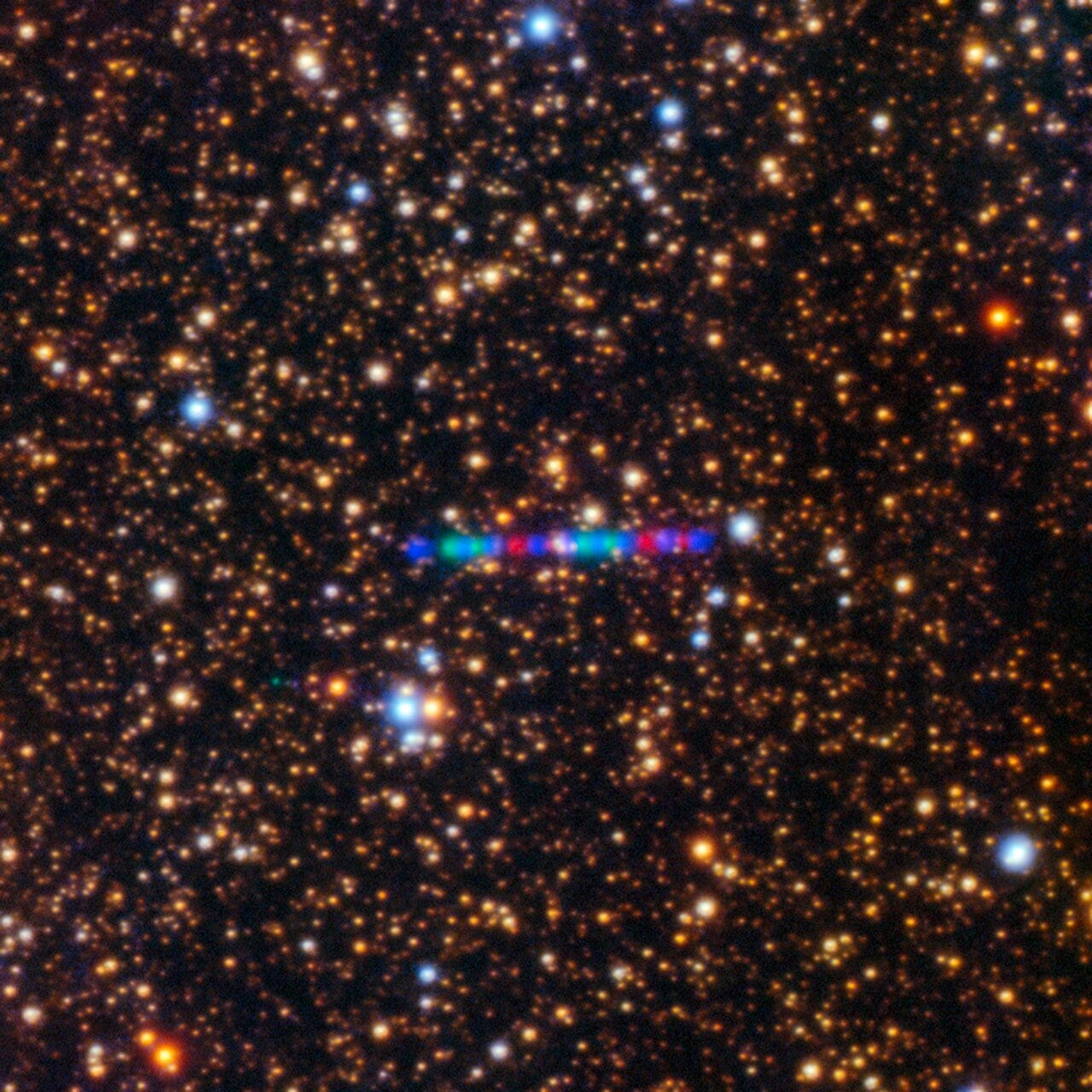
We’re being visited by an object of alien origin.
We can thank an Asteroid Terrestrial-impact Last Alert System (ATLAS) survey telescope — part of an ongoing project to protect Earth from dangerous space rocks — for the discovery of this interstellar interloper. The ATLAS team first observed this object — a comet passing by the Sun — on July 1, 2025, and named it 3I/ATLAS. The ‘3’ in its name indicates it’s the third known object passing through our solar system whose orbit shows it came from another star system. The ‘I’ stands for “interstellar,” and “ATLAS,” of course, credits the team that discovered it.
The ATLAS survey uses four telescopes located around the world to search for and identify potentially hazardous near-Earth objects (NEOs). After initial discovery, astronomers then must track these objects over time to determine their trajectory and gauge whether they pose a threat to Earth.
Their observations of 3I/ATLAS indicate it came from the direction of the constellation Sagittarius, and it will continue its journey through space after passing the Sun in late October. Most importantly, it poses no danger to Earth: Although its trajectory brings it into the inner solar system, even its closest point from our planet will be about 150 million miles away.
While 3I/ATLAS is our most recent discovery of an interstellar object, two earlier observations preceded it. ‘Oumuamua, which means “a messenger from afar arriving first” in Hawaiian, was discovered in 2017 and is the first known interstellar object. You may have heard speculative, unresearched, and unverifiable assertions that ‘Oumuamua was an alien spaceship. Pending a scrap of evidence, please ignore these claims.
The second object, 2I/Borisov, is the first interstellar comet ever observed. Crimean amateur astronomer Gennadiy Borisov discovered it in 2019, using a telescope he designed and built. In addition to 2I/Borisov, Borisov also has discovered nine other comets and several NEOs — all with telescopes he constructed.
Our most recent interstellar invader, 3I/ATLAS, is traveling at about 138,000 mph — fast enough to escape the Sun’s gravity. At this speed, it would take more than 20,000 years to reach the closest star system. This means it has been flying through the space between the stars for millions — maybe billions — of years. In fact, 3I/ATLAS could be older than our solar system — even billions of years older.
Obtaining a sample from an object that originated outside the solar system would arm scientists with data that is impossible to obtain except through physical sampling. Unfortunately, we can’t build and launch a craft in time to rendezvous with this comet. Until we develop more powerful telescopes that allow us to detect these interstellar travelers much earlier than we can now, we’ll have to settle for telescopic observations.
Considering how empty space is, it’s pretty amazing that these objects find their way to the solar system, and even more amazing that we’re able to detect them.
The Weekly Roundup:
The Morning Sky
Venus still takes my breath away after all this time. Look for the Morning Star blazing in the east before dawn. Jupiter returns to the morning sky this week and is visible low in the east before dawn. The king of planets will draw closer to Venus every day over the next couple of weeks, culminating in a fantastic rendezvous in early August.
The Evening Sky
Try to spot the slender crescent Moon low in the west as the Sun sets on Saturday. The Moon will join Mars on Monday night for a lovely pairing low in the western evening sky.
Dan Price is a NASA/JPL Solar System Ambassador and informal educator. Have a question about astronomy or space science? Send an email to dan@starpointestudio.com and it might be featured in a future column.

